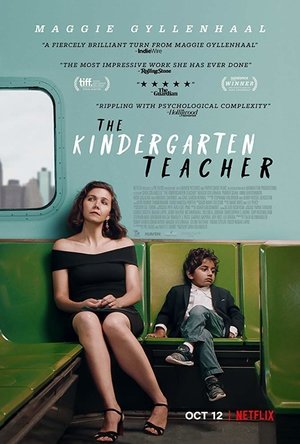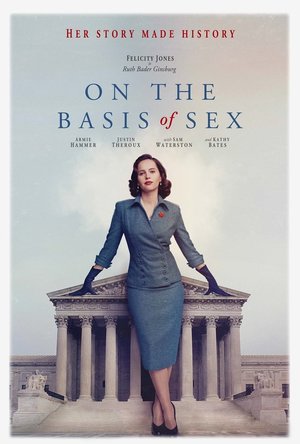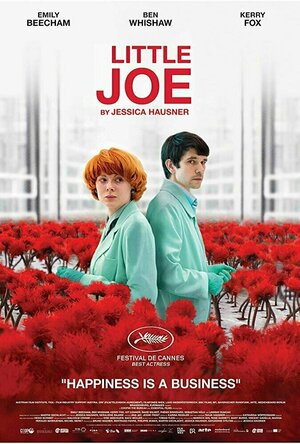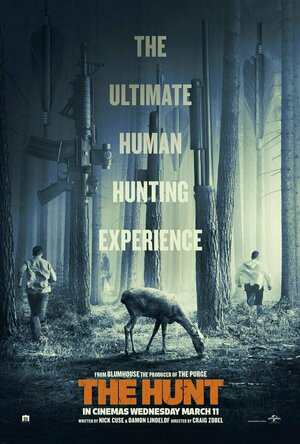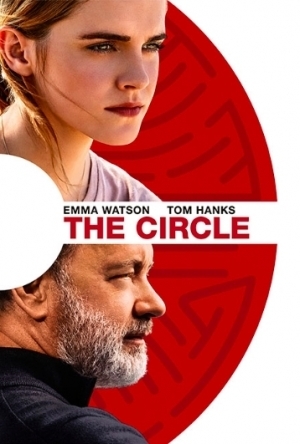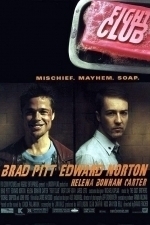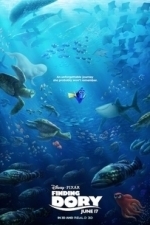Search
Search results
Lucy Buglass (45 KP) rated The Kindergarten Teacher (2018) in Movies
Jun 20, 2019
It’s always nice to see teachers encouraging and motivating their students, but in Sara Colangelo’s The Kindergarten Teacher, this is taken to a terrifying new level. Based on an Israeli film of the same name, it explores the line between encouragement and obsession. What happens when a bored kindergarten teacher meets a child prodigy? That’s what this film attempts to answer.
When teacher Lisa Spinelli (Maggie Gyllenhaal) meets pre-schooler Jimmy (Parker Sevak), her life is flipped upside down. Lisa attends poetry night classes, but her work is frequently criticised by teacher Simon (Gael García Bernal). Her family life is unsatisfactory, with her two children underachieving in her eyes. Because of her dissatisfaction with her life, she finds herself latching onto Jimmy and attempting to live vicariously through him. The film takes the two of them on a journey, where Lisa does everything she can to nurture Jimmy’s talent.
The pair’s first encounter happens when Jimmy reads out a poem, which Lisa believes to be way beyond his age group. Throughout the film, she encourages him to write more and more, and the scenes where Jimmy reads his work aloud are captivating. This is Parker Sevak’s acting debut, and he is a seriously impressive child actor. Because the level of poetry in the film is so advanced, he speaks incredibly clearly which stuns both Lisa and the audience. He was the stand-out performance for me, and at the age of 5, manages to steal the show. I am keen to see more films starring him in the future.
That doesn’t mean Gyllenhaal’s performance was bad. In fact, this is probably my favourite of hers in such a long time. Her tenacity and passion are admirable at first and then turns into obsession very quickly. The dark turn her character takes genuinely shocked me, even though it’s inevitable she’s going to do whatever it takes to get her own way. Despite this, I felt sorry for her throughout, which is a testament to the strength of Gyllenhaal’s acting. Lisa does questionable things, she lashes out, yet I was still hoping for a better outcome. I was hoping she’d see sense one way or another. She’s a problematic character for sure, but she doesn’t have to be this way. I felt like she had the power to stop what she was doing.
The film’s pacing worked very well for me, slowly building until the final act. I loved the way it ended, as it left me with a sinking feeling. The last line by Jimmy broke my heart, and if you’ve seen it for yourself, I’m sure you’ll understand why. The screenplay is brilliantly written and tells an incredibly controversial story of what is essentially child exploitation. Jimmy’s young and impressionable mind is taken advantage of based on his talents, resulting in a series of increasingly concerning events. Just when you think Lisa can’t cross any more lines, she does, and it’s enough to shock anyone.
I was completely glued to the screen for the entire third act. If you’re looking for a fresh, thought-provoking drama then I would certainly recommend this. Maggie Gyllenhaal is at the top of her game in The Kindergarten Teacher, delivering a performance that leaves audiences feeling conflicted. This is certainly a heavy film, but I’d also consider it a must-watch and a cautionary tale for the modern age.
https://jumpcutonline.co.uk/review-the-kindergarten-teacher-2019/
When teacher Lisa Spinelli (Maggie Gyllenhaal) meets pre-schooler Jimmy (Parker Sevak), her life is flipped upside down. Lisa attends poetry night classes, but her work is frequently criticised by teacher Simon (Gael García Bernal). Her family life is unsatisfactory, with her two children underachieving in her eyes. Because of her dissatisfaction with her life, she finds herself latching onto Jimmy and attempting to live vicariously through him. The film takes the two of them on a journey, where Lisa does everything she can to nurture Jimmy’s talent.
The pair’s first encounter happens when Jimmy reads out a poem, which Lisa believes to be way beyond his age group. Throughout the film, she encourages him to write more and more, and the scenes where Jimmy reads his work aloud are captivating. This is Parker Sevak’s acting debut, and he is a seriously impressive child actor. Because the level of poetry in the film is so advanced, he speaks incredibly clearly which stuns both Lisa and the audience. He was the stand-out performance for me, and at the age of 5, manages to steal the show. I am keen to see more films starring him in the future.
That doesn’t mean Gyllenhaal’s performance was bad. In fact, this is probably my favourite of hers in such a long time. Her tenacity and passion are admirable at first and then turns into obsession very quickly. The dark turn her character takes genuinely shocked me, even though it’s inevitable she’s going to do whatever it takes to get her own way. Despite this, I felt sorry for her throughout, which is a testament to the strength of Gyllenhaal’s acting. Lisa does questionable things, she lashes out, yet I was still hoping for a better outcome. I was hoping she’d see sense one way or another. She’s a problematic character for sure, but she doesn’t have to be this way. I felt like she had the power to stop what she was doing.
The film’s pacing worked very well for me, slowly building until the final act. I loved the way it ended, as it left me with a sinking feeling. The last line by Jimmy broke my heart, and if you’ve seen it for yourself, I’m sure you’ll understand why. The screenplay is brilliantly written and tells an incredibly controversial story of what is essentially child exploitation. Jimmy’s young and impressionable mind is taken advantage of based on his talents, resulting in a series of increasingly concerning events. Just when you think Lisa can’t cross any more lines, she does, and it’s enough to shock anyone.
I was completely glued to the screen for the entire third act. If you’re looking for a fresh, thought-provoking drama then I would certainly recommend this. Maggie Gyllenhaal is at the top of her game in The Kindergarten Teacher, delivering a performance that leaves audiences feeling conflicted. This is certainly a heavy film, but I’d also consider it a must-watch and a cautionary tale for the modern age.
https://jumpcutonline.co.uk/review-the-kindergarten-teacher-2019/
Gareth von Kallenbach (980 KP) rated On the Basis of Sex (2018) in Movies
Jul 2, 2019
In the year 2018, it’s easy to forget how much the times have changed over the last century. We now carry computers around in our pockets, have the internet to conduct worldwide business in a matter of seconds and cars that run on electricity. Considering all of these amazing technological advancements you would think something as simple and no-brainer as equal rights must have been around for hundreds and hundreds of years, right? Well, the new movie On the Basis of Sex humbly reminded me that the equal rights movement was not too much longer ago than the invention of the internet and it was just the type of reminder I needed to once again appreciate just how far we have come.
On the Basis of Sex is a biopic detailing Ruth Bader Ginsburg’s (Felicity Jones) rise from one of the first women “invited” to attend Harvard Law School to becoming the 2nd woman nominated to the U.S. Supreme Court. The first part of the movie aptly chronicles Mrs. Ginsburg’s experience as a woman at Harvard Law School and then getting her first job as a professor at Rutgers Law School in 1963. Considering she graduated at the top of her class being a professor was not her dream job, but law firms were not looking to hire female lawyers, so she made the best of it. This all leads up to the main focus of the film which is Mrs. Ginsburg representing a Colorado man who has been denied caretaker tax benefits because the tax code specifically applied to women. The movie shows both her struggles and triumphs with the case and why equal rights were so important to her. Although the movie focused on this one case, it was crystal clear that Ruth Bader Ginsburg was a force to be reckoned with and this was just one of many cases she would take on to ensure greater equality for woman.
Felicity Jones does an incredible job portraying Mrs. Ginsburg. She brings a swagger to the character and used an authentic sounding Brooklyn accent to boot. Armie Hammer also does a great job playing the ever supportive and unshakable husband Marty Ginsburg. They had great chemistry on screen and did an excellent job showing just how supportive they were to one another. Even though their relationship was not the focus of the film, it was very touching and added a little extra heart to the story. Speaking of the story, it was both engaging and thought provoking, so much so that its effects are still there even after leaving the theater. I enjoyed how the story unfolded and the fact that it never got to preachy or political. As biopics go, there were a few spots that seemed to drag on a bit, but generally the pace never lingered in one spot for too long and it kept my interest the whole time.
On the Basis of Sex was a very good movie and a welcome addition to this year’s holiday movie offerings. If you are looking for something different after a couple of hours with web slinging spider-folk and yellow cars that turn into giant robots then this would be a great movie to check out. With excellent acting, a great inspirational story and even a little bit of heart, I really couldn’t ask for anything more.
On the Basis of Sex is a biopic detailing Ruth Bader Ginsburg’s (Felicity Jones) rise from one of the first women “invited” to attend Harvard Law School to becoming the 2nd woman nominated to the U.S. Supreme Court. The first part of the movie aptly chronicles Mrs. Ginsburg’s experience as a woman at Harvard Law School and then getting her first job as a professor at Rutgers Law School in 1963. Considering she graduated at the top of her class being a professor was not her dream job, but law firms were not looking to hire female lawyers, so she made the best of it. This all leads up to the main focus of the film which is Mrs. Ginsburg representing a Colorado man who has been denied caretaker tax benefits because the tax code specifically applied to women. The movie shows both her struggles and triumphs with the case and why equal rights were so important to her. Although the movie focused on this one case, it was crystal clear that Ruth Bader Ginsburg was a force to be reckoned with and this was just one of many cases she would take on to ensure greater equality for woman.
Felicity Jones does an incredible job portraying Mrs. Ginsburg. She brings a swagger to the character and used an authentic sounding Brooklyn accent to boot. Armie Hammer also does a great job playing the ever supportive and unshakable husband Marty Ginsburg. They had great chemistry on screen and did an excellent job showing just how supportive they were to one another. Even though their relationship was not the focus of the film, it was very touching and added a little extra heart to the story. Speaking of the story, it was both engaging and thought provoking, so much so that its effects are still there even after leaving the theater. I enjoyed how the story unfolded and the fact that it never got to preachy or political. As biopics go, there were a few spots that seemed to drag on a bit, but generally the pace never lingered in one spot for too long and it kept my interest the whole time.
On the Basis of Sex was a very good movie and a welcome addition to this year’s holiday movie offerings. If you are looking for something different after a couple of hours with web slinging spider-folk and yellow cars that turn into giant robots then this would be a great movie to check out. With excellent acting, a great inspirational story and even a little bit of heart, I really couldn’t ask for anything more.
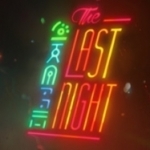
The Last Night
Video Game Watch
Humans first knew the era of survival. Then they knew the era of work. Now they live in the era of...
adventure
Neon's Nerd Nexus (360 KP) rated Little Joe (2019) in Movies
Jun 15, 2020
Everyone knows a working Joe
Little Joe is a look into happiness and the lengths we will go to to achieve it while also delving deeply into the manipulation, the deprivation of freedom, greed and selfishness that can surround and alter that path too. After having a very limited cinema release in th Uk i decided to pre-order this on itunes. Today sees its release and after giving it a watch I can say I really did enjoy this movie despite a lot of other reviews saying its unwatchable due to its high pitched soundtrack. Little Joe most of the time is a very cold and clinically sterile looking film thats contrasted subtlety with bold pastle shades of colour in sets that almost have an art deco feel to them. This helps the film look constantly striking/beautiful but also adds a sense of unnatural uneasiness too it too. Combine this with a soundtrack made up of scratches, plucks, plinks and plonks woven together into a score that has an almost oriental sound to it which gives the film a constant chilling vibe and an unnerving/erie atmosphere. Its invokes intense stress on the senses thats for sure and it kept me feeling uncomfortable/stressed the entire movie and also leaving me ears ringing long after the film had had ended too. I wouldnt say its unbearable however and it definitely fits the film/adds to the atmosphere. Performances are great too feeling again very cold and focused with Ben Whishaw being the standout here as always playing a charcter so professional and confident when it comes to work yet so socially awkward when it comes to his relationships with other people. Theres running theme of happiness here thats for sure and the heights/lengths we as people will go to to just to achieve it. Primarily as a film it seems focused on questioning if drugs for conditions such as depression or dementia that are taken to make people feel happier/more 'normal' are worth the cost of losing personalities, emotions and in a sense freedom because like they say in the film "who cares if people are zombies as long as they are happy". Theres also a look at parents subduing childs behaviours for a quieter life which in a sence takes away all the traits youth and the joys of being a child bring, or partners that cant deal with thier other half being sad or having arguments all the time so they presure them onto drugs in a selfish/controlling way because to then its far easier and less time consuming than actually learning/undertsanding and putting in the effort in to helping them. Then theres how society mocks, neglects and fails to understand certain illnesses and also how companies profit from them making drugs with increasingly worse side effects but it doesnt phase them as long as they are meeting targets/company goals. Little Joe definitely contains a lot of very thought provoking stuff its just sadly all a bit messy when mixed in with all the films dark comedy and scifi horror elements and it does quite often lose its way or fall short on conclusions. That being said i found this film to be well worth the watch just be sure you know before you go in that its very slow, stressful and depressing with an intense score and a conclusion thats ultimately unrewarding but overall its great little look into the effects of drugs that are meant to help with making us all feel 'normal' and 'happy' in life.
Sarah (7800 KP) rated The Hunt (2020) in Movies
Nov 14, 2020
Darkly fun
The Hunt follows twelve strangers as they wake up in a clearing with no recollection of how they got there, and soon find themselves hunted for sport by a group of liberal elites.
Starring Betty Gilpin, Hilary Swank, Emma Roberts, Ethan Suplee and Justin Hartley, and written by Nick Cuse and Damon Lindelof, The Hunt’s original release was delayed in 2019 due to a number of mass shootings in America. It was pushed back to Spring 2020 only for it to come out just before the big lockdown for COVID-19, so to say this film has suffered a few setbacks would be an understatement, and this is a shame as it’s actually one of the most enjoyable new releases I’ve seen in 2020 so far.
Right from the opening scene, The Hunt shows you what it’s made of - understated and subtle it is not. It’s a riotously funny and witty parody, poking fun at absolutely everyone in it with it’s on the nose references that are so relevant to today’s political and social climate. Neither the prey or the hunters escape unscathed, in all manner of the word, and everything from climate change to racial prejudices and political ideology feature heavily in the running satire on offer here. This is a darkly funny and very smart film, and it knows it.
What this film is not though, is a horror film. Gory yes and brilliantly so, but it is in no means scary or horrifying. The plot itself is of course reminiscent of Battle Royale and even The Hunger Games, but The Hunt is very much it’s own film. It starts with an overly dramatic score and a decent amount of tension, and shifts into the action virtually straight away - with a short 90 minute runtime, this doesn’t waste it’s time on unnecessary exposition. Whilst I wouldn’t say this isn’t entirely unpredictable, The Hunt still has a few surprises to throw at you. The first half hour plays out a lot differently than you’d expect and makes you wonder if it’s played out it’s hand a little too soon.
But then in walks Betty Gilpin who is by far the star of the show and leads the remaining hour almost single handedly. Gilpin’s Crystal is a kickass, strong, smart heroine and she’s a delight to watch, although even she can’t quite save the lull half way through. Fortunately the lull doesn’t last long and watching Crystal exact her revenge on the hunters is wonderful to watch. Hilary Swank however is on the sidelines for most of the film, and for some bizarre reason whenever she is featured earlier on her face is kept hidden which is a rather strange move when we all know who it is. But despite this, when Swank is finally revealed in the final act she plays the cold, cruel and calculating Athena as a perfect callous bitch. The final exchange and reveal between Athena and Crystal is smart, tense and wickedly funny, and the ensuing fight scene is beautifully choreographed with some great laughs thrown in, and is probably the best fight scene I’ve seen in any film in quite some time.
The Hunt is gloriously over the top and mocks everyone and everything, yet also proves to be an equally thought provoking and relevant commentary on today’s society. As long as you’re not easily offended and don’t take it too seriously, it’ll prove to be hugely entertaining.
Starring Betty Gilpin, Hilary Swank, Emma Roberts, Ethan Suplee and Justin Hartley, and written by Nick Cuse and Damon Lindelof, The Hunt’s original release was delayed in 2019 due to a number of mass shootings in America. It was pushed back to Spring 2020 only for it to come out just before the big lockdown for COVID-19, so to say this film has suffered a few setbacks would be an understatement, and this is a shame as it’s actually one of the most enjoyable new releases I’ve seen in 2020 so far.
Right from the opening scene, The Hunt shows you what it’s made of - understated and subtle it is not. It’s a riotously funny and witty parody, poking fun at absolutely everyone in it with it’s on the nose references that are so relevant to today’s political and social climate. Neither the prey or the hunters escape unscathed, in all manner of the word, and everything from climate change to racial prejudices and political ideology feature heavily in the running satire on offer here. This is a darkly funny and very smart film, and it knows it.
What this film is not though, is a horror film. Gory yes and brilliantly so, but it is in no means scary or horrifying. The plot itself is of course reminiscent of Battle Royale and even The Hunger Games, but The Hunt is very much it’s own film. It starts with an overly dramatic score and a decent amount of tension, and shifts into the action virtually straight away - with a short 90 minute runtime, this doesn’t waste it’s time on unnecessary exposition. Whilst I wouldn’t say this isn’t entirely unpredictable, The Hunt still has a few surprises to throw at you. The first half hour plays out a lot differently than you’d expect and makes you wonder if it’s played out it’s hand a little too soon.
But then in walks Betty Gilpin who is by far the star of the show and leads the remaining hour almost single handedly. Gilpin’s Crystal is a kickass, strong, smart heroine and she’s a delight to watch, although even she can’t quite save the lull half way through. Fortunately the lull doesn’t last long and watching Crystal exact her revenge on the hunters is wonderful to watch. Hilary Swank however is on the sidelines for most of the film, and for some bizarre reason whenever she is featured earlier on her face is kept hidden which is a rather strange move when we all know who it is. But despite this, when Swank is finally revealed in the final act she plays the cold, cruel and calculating Athena as a perfect callous bitch. The final exchange and reveal between Athena and Crystal is smart, tense and wickedly funny, and the ensuing fight scene is beautifully choreographed with some great laughs thrown in, and is probably the best fight scene I’ve seen in any film in quite some time.
The Hunt is gloriously over the top and mocks everyone and everything, yet also proves to be an equally thought provoking and relevant commentary on today’s society. As long as you’re not easily offended and don’t take it too seriously, it’ll prove to be hugely entertaining.
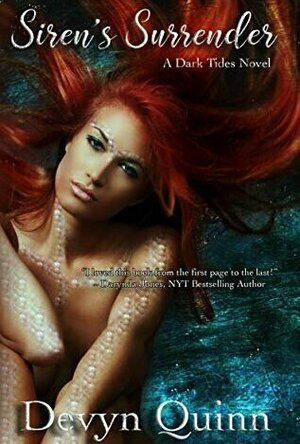
Siren's Surrender (Dark Tides #2)
Book
Never embracing her mermaid heritage, Gwen Lonike lives in the human world as the owner of a Maine...
Bob Mann (459 KP) rated The Circle (2017) in Movies
Sep 29, 2021
Social Media involvement in political manipulation? Don’t be ridiculous!
Set in the near future “The Circle” tells a horror story of the social media age involving an omnipotent American corporate, pitched somewhere between being Facebook-like and Google-like (note, lawyers, I just said “like”!) Emma Watson (“Beauty and the Beast“) plays young intern Mae who, partly through the aid of family friend Annie (Karen Gillan, “Guardians of the Galaxy“, “Doctor Who”) but mostly through her own aptitude, lands a foothold job in customer services for the company. With the lush corporate campus fast becoming home, Mae is quickly singled out as having “executive potential” by the charismatic CEO Bailey (Tom Hanks, “Bridge of Spies“) and his more taciturn sidekick Stenton (US comedian Patton Oswalt).
Progressively brainwashed into believing the company’s intrusive snooping (a favourite motto is “Secrets are Lies”) is all for ‘the greater good’, Mae champions the cause until a tragedy rocks her world and her company beliefs to the core.
Whenever I watch a film I tend to form my own opinion first before checking out what the ‘general public’ on IMDB think. In this case, I must confess to being a bit surprised at our divergence of views: a lot of people clearly hated this movie whereas I confess that I found it very entertaining. Certainly with the alleged role of Russia in influencing elections around the world via social media, the film is most certainly topical! Many reviewers seemed quite upset that Watson’s character is such a ‘doormat’, in that her views are so easily manipulated by the corporate machine. But not every woman – as indeed every man – can or should be a Joan of Arc style role model in every film: why should they be?
I actually found her indoctrination into “the Circle way” as quite convincing, especially a creepy scene where two corporate lackies (Cho Smith and Amir Talai) say that they’re not checking up on Mae’s social life, but…. Watson enjoys extending her post-Potter repertoire well, but the talented John Boyega (“Star Wars: The Force Awakens“) is completely wasted in his role as Ty; the Wozniak-like genious behind The Circle’s technology. The script gives him very little to do other than stand around and look grumpy.
A wasted John Boyega with Emma Watson.
The film is sad in being the last movie appearance of the great Bill Paxton (“Apollo 13”) who plays Mae’s sick father and who died of complications following heart surgery two months before the film’s release (the film is dedicated “For Bill”). Tragically, Mae’s mother in the film, actress Glenn Headly (“Dirty Rotten Scoundrels”) also died suddenly at the age of 62, also due to heart problems, a couple of months after the film’s release. It’s surprising the film doesn’t have a “curse of The Circle” tag on it.
The film was directed by James Ponsoldt, who also wrote the screenplay with novel-writer Dave Eggers (“Away We Go”). I particularly liked the on-screen use of captioning (posts) which was reminiscent to me of last year’s “Nerve“, a B-movie film I rated highly that also had a string social media theme.
While the ending of the film is a bit twee – a movie definition of “being hoisted by your own petard” – it’s overall a thought provoking piece sufficiently close to the truth as to where society is going to raise the hairs on your neck.
Progressively brainwashed into believing the company’s intrusive snooping (a favourite motto is “Secrets are Lies”) is all for ‘the greater good’, Mae champions the cause until a tragedy rocks her world and her company beliefs to the core.
Whenever I watch a film I tend to form my own opinion first before checking out what the ‘general public’ on IMDB think. In this case, I must confess to being a bit surprised at our divergence of views: a lot of people clearly hated this movie whereas I confess that I found it very entertaining. Certainly with the alleged role of Russia in influencing elections around the world via social media, the film is most certainly topical! Many reviewers seemed quite upset that Watson’s character is such a ‘doormat’, in that her views are so easily manipulated by the corporate machine. But not every woman – as indeed every man – can or should be a Joan of Arc style role model in every film: why should they be?
I actually found her indoctrination into “the Circle way” as quite convincing, especially a creepy scene where two corporate lackies (Cho Smith and Amir Talai) say that they’re not checking up on Mae’s social life, but…. Watson enjoys extending her post-Potter repertoire well, but the talented John Boyega (“Star Wars: The Force Awakens“) is completely wasted in his role as Ty; the Wozniak-like genious behind The Circle’s technology. The script gives him very little to do other than stand around and look grumpy.
A wasted John Boyega with Emma Watson.
The film is sad in being the last movie appearance of the great Bill Paxton (“Apollo 13”) who plays Mae’s sick father and who died of complications following heart surgery two months before the film’s release (the film is dedicated “For Bill”). Tragically, Mae’s mother in the film, actress Glenn Headly (“Dirty Rotten Scoundrels”) also died suddenly at the age of 62, also due to heart problems, a couple of months after the film’s release. It’s surprising the film doesn’t have a “curse of The Circle” tag on it.
The film was directed by James Ponsoldt, who also wrote the screenplay with novel-writer Dave Eggers (“Away We Go”). I particularly liked the on-screen use of captioning (posts) which was reminiscent to me of last year’s “Nerve“, a B-movie film I rated highly that also had a string social media theme.
While the ending of the film is a bit twee – a movie definition of “being hoisted by your own petard” – it’s overall a thought provoking piece sufficiently close to the truth as to where society is going to raise the hairs on your neck.
DaveySmithy (107 KP) rated Fight Club (1999) in Movies
Dec 3, 2024
An Explosive and Provocative Journey
Few films have managed to spark as much debate and cultural impact as David Fincher’s Fight Club. Released in 1999, this dark and audacious psychological thriller quickly evolved from a divisive box office release to a bona fide cult classic. Based on Chuck Palahniuk’s novel of the same name, Fight Club is more than just a movie—it’s an exploration of identity, consumerism, and the hidden chaos lurking within us all. Fincher’s meticulous direction, coupled with outstanding performances by Edward Norton and Brad Pitt, makes Fight Club a visceral and thought-provoking cinematic ride that lingers long after the credits roll.
The story is told through the eyes of the unnamed narrator (Norton), a white-collar worker trapped in a monotonous life. Crippled by insomnia and a desperate longing for purpose, his mundane existence takes a dramatic turn when he crosses paths with Tyler Durden (Pitt), a magnetic, anarchic soap maker. Together, they form the titular fight club—a raw, underground outlet for men to vent their frustrations by literally beating them out of each other. What begins as an unconventional form of therapy soon spirals into a chaotic and dangerous movement, leading the narrator down a path of self-destruction and shocking revelations.
Edward Norton delivers a career-best performance as the narrator, capturing the character’s descent into madness with unnerving precision. His dry wit and self-deprecating humor make him relatable, even as his actions become increasingly unhinged. But it’s Brad Pitt who truly steals the show as Tyler Durden. Charismatic, unpredictable, and dripping with swagger, Pitt embodies the fantasy of rebellion and freedom that so many viewers secretly crave. Together, the two actors create a mesmerizing dynamic, with Tyler representing everything the narrator wants to be—and fears he might become.
Helena Bonham Carter rounds out the core cast as Marla Singer, a nihilistic wildcard who both disrupts and grounds the narrator’s chaotic journey. Her chemistry with Norton is as compelling as it is unconventional, adding a layer of emotional complexity to an otherwise hyper-masculine narrative.
What sets Fight Club apart is its fearless critique of modern society. It skewers consumerism, masculinity, and the emptiness of the so-called “American Dream,” forcing viewers to confront uncomfortable truths about their own lives. Fincher’s direction is sharp and unrelenting, with the film’s gritty visual style perfectly complementing its nihilistic tone. The innovative use of CGI, fourth-wall-breaking moments, and hauntingly effective cinematography by Jeff Cronenweth keep the audience on edge, unsure of what to expect next.
Yet, Fight Club is not without flaws. Its provocative themes can feel overly blunt at times, and some viewers might find its violent and anarchistic undertones alienating. Additionally, while the infamous plot twist is masterfully executed, it risks overshadowing the film’s deeper messages upon rewatch.
The soundtrack, anchored by The Dust Brothers’ industrial score and the unforgettable use of The Pixies’ “Where Is My Mind?” in the climax, elevates the film to iconic status. These elements, combined with razor-sharp dialogue and endlessly quotable lines, solidify Fight Club as a masterpiece of late-90s cinema.
While it may not be for everyone, Fight Club is a bold, daring, and unforgettable experience that challenges societal norms and forces introspection. It’s an audacious 9/10 film—flawed but brilliant, much like the chaos it portrays.
The story is told through the eyes of the unnamed narrator (Norton), a white-collar worker trapped in a monotonous life. Crippled by insomnia and a desperate longing for purpose, his mundane existence takes a dramatic turn when he crosses paths with Tyler Durden (Pitt), a magnetic, anarchic soap maker. Together, they form the titular fight club—a raw, underground outlet for men to vent their frustrations by literally beating them out of each other. What begins as an unconventional form of therapy soon spirals into a chaotic and dangerous movement, leading the narrator down a path of self-destruction and shocking revelations.
Edward Norton delivers a career-best performance as the narrator, capturing the character’s descent into madness with unnerving precision. His dry wit and self-deprecating humor make him relatable, even as his actions become increasingly unhinged. But it’s Brad Pitt who truly steals the show as Tyler Durden. Charismatic, unpredictable, and dripping with swagger, Pitt embodies the fantasy of rebellion and freedom that so many viewers secretly crave. Together, the two actors create a mesmerizing dynamic, with Tyler representing everything the narrator wants to be—and fears he might become.
Helena Bonham Carter rounds out the core cast as Marla Singer, a nihilistic wildcard who both disrupts and grounds the narrator’s chaotic journey. Her chemistry with Norton is as compelling as it is unconventional, adding a layer of emotional complexity to an otherwise hyper-masculine narrative.
What sets Fight Club apart is its fearless critique of modern society. It skewers consumerism, masculinity, and the emptiness of the so-called “American Dream,” forcing viewers to confront uncomfortable truths about their own lives. Fincher’s direction is sharp and unrelenting, with the film’s gritty visual style perfectly complementing its nihilistic tone. The innovative use of CGI, fourth-wall-breaking moments, and hauntingly effective cinematography by Jeff Cronenweth keep the audience on edge, unsure of what to expect next.
Yet, Fight Club is not without flaws. Its provocative themes can feel overly blunt at times, and some viewers might find its violent and anarchistic undertones alienating. Additionally, while the infamous plot twist is masterfully executed, it risks overshadowing the film’s deeper messages upon rewatch.
The soundtrack, anchored by The Dust Brothers’ industrial score and the unforgettable use of The Pixies’ “Where Is My Mind?” in the climax, elevates the film to iconic status. These elements, combined with razor-sharp dialogue and endlessly quotable lines, solidify Fight Club as a masterpiece of late-90s cinema.
While it may not be for everyone, Fight Club is a bold, daring, and unforgettable experience that challenges societal norms and forces introspection. It’s an audacious 9/10 film—flawed but brilliant, much like the chaos it portrays.
Hazel (1853 KP) rated Touching the Rock: An Experience of Blindness (Notes on Blindness Film Tie-in) in Books
May 23, 2017
Eye-opener (if you pardon the pun)
I received this book for free through Goodreads First Reads.
It is not often a blind man writes a book, and “write” is a word used due to the lack of a better. John M. Hull gradually lost his sight, registering as blind in 1980, a couple of days before the birth of his son. Although anticipating the event, John struggled to come to terms with his new circumstances and adjust to a new way of living. From 1983 through to 1985, John recorded his thoughts on tape, in diary form, as a way to ascertain and understand his predicament. Originally titled Touching the Rock (1990), John’s book has been republished as Notes on Blindness after the release of the film of the same name.
Initially, John made recordings every day, dictating the everyday occurrences he encountered. Amazingly, despite his disability, John was able to continue as a university lecturer and delve deeper into the world of theology. The way John thinks things through as he speaks reflects his academic abilities. Although he may have despaired at the thoughts of not being able to see his children, he had a fairly positive outlook on life.
John’s thought capacity and religious ideology are evident in his assemblage of diary entries. As a blind person, he learns to see the world in an alternative way, and often feels closer to God as a result. Through these new experiences, John begins to see the light despite the darkness.
The metaphorical descriptions of blindness help the reader to understand the horror and difficulties not being able to see visually provokes. This is heightened by John’s recordings of the bad dreams he often suffers, in which he is able to see. His fixations on these dreams are assumedly a fascination with visual imagery, which he does not have access to in his waking life.
It is hard not feel sorry for John as he reports the conversations he has with his young children. The effort to communicate and play with them is far greater than a seeing parent. Remarkably, as John begins to adjust to his new lifestyle, his children take the situation in their stride.
Notes on Blindness is also an educational narrative for those without sight problems. John explains the things other people, in attempts to be helpful, do that result in making things far more confusing for John as he tries to navigate his way from one place to another. Despite what most think, blind people are fairly good at walking routes they are familiar with, and, with the help of a stick, can safely travel through new areas. Once people start shouting instructions, it is difficult to pay attention to the location and listen to everyone else at the same time.
John’s voice is extremely articulate, and his thoughts profound, which may suggest heavy editing when compiling the recordings into written form. However, as he is an academician, his eloquence of speech does not feel forced or faked.
Notes on Blindness remains the same as the original publication but with the added inclusion of an introduction by Cathy Rentzenbrink, and an epilogue by his wife Marilyn, written in 2016, a year after his death. These, the latter in particular, provide an insight into how John’s blindness affected those around him and emphasises what a truly remarkable man he was.
Of the many memoirs available on bookshelves today, Notes on Blindness is a truly unique publication. It is not telling a story, or recounting a well-lived life, but gives great insight into the world of the blind. As John’s thoughts were not originally recorded with intention of being available to everyone, they are all the more personal and honest, provoking emotion and providing the reader with a new way of seeing. It is a book that will stay with you for a very long time.
It is not often a blind man writes a book, and “write” is a word used due to the lack of a better. John M. Hull gradually lost his sight, registering as blind in 1980, a couple of days before the birth of his son. Although anticipating the event, John struggled to come to terms with his new circumstances and adjust to a new way of living. From 1983 through to 1985, John recorded his thoughts on tape, in diary form, as a way to ascertain and understand his predicament. Originally titled Touching the Rock (1990), John’s book has been republished as Notes on Blindness after the release of the film of the same name.
Initially, John made recordings every day, dictating the everyday occurrences he encountered. Amazingly, despite his disability, John was able to continue as a university lecturer and delve deeper into the world of theology. The way John thinks things through as he speaks reflects his academic abilities. Although he may have despaired at the thoughts of not being able to see his children, he had a fairly positive outlook on life.
John’s thought capacity and religious ideology are evident in his assemblage of diary entries. As a blind person, he learns to see the world in an alternative way, and often feels closer to God as a result. Through these new experiences, John begins to see the light despite the darkness.
The metaphorical descriptions of blindness help the reader to understand the horror and difficulties not being able to see visually provokes. This is heightened by John’s recordings of the bad dreams he often suffers, in which he is able to see. His fixations on these dreams are assumedly a fascination with visual imagery, which he does not have access to in his waking life.
It is hard not feel sorry for John as he reports the conversations he has with his young children. The effort to communicate and play with them is far greater than a seeing parent. Remarkably, as John begins to adjust to his new lifestyle, his children take the situation in their stride.
Notes on Blindness is also an educational narrative for those without sight problems. John explains the things other people, in attempts to be helpful, do that result in making things far more confusing for John as he tries to navigate his way from one place to another. Despite what most think, blind people are fairly good at walking routes they are familiar with, and, with the help of a stick, can safely travel through new areas. Once people start shouting instructions, it is difficult to pay attention to the location and listen to everyone else at the same time.
John’s voice is extremely articulate, and his thoughts profound, which may suggest heavy editing when compiling the recordings into written form. However, as he is an academician, his eloquence of speech does not feel forced or faked.
Notes on Blindness remains the same as the original publication but with the added inclusion of an introduction by Cathy Rentzenbrink, and an epilogue by his wife Marilyn, written in 2016, a year after his death. These, the latter in particular, provide an insight into how John’s blindness affected those around him and emphasises what a truly remarkable man he was.
Of the many memoirs available on bookshelves today, Notes on Blindness is a truly unique publication. It is not telling a story, or recounting a well-lived life, but gives great insight into the world of the blind. As John’s thoughts were not originally recorded with intention of being available to everyone, they are all the more personal and honest, provoking emotion and providing the reader with a new way of seeing. It is a book that will stay with you for a very long time.
Movie Metropolis (309 KP) rated Finding Dory (2016) in Movies
Jun 11, 2019
Is it a return to form for Pixar/
For years, Pixar was an unstoppable force. The studio combined stunning animation with thought-provoking stories that adults and children could enjoy. From Toy Story to Wall.E, everyone, at some point will have watched a Pixar film.
Then a few things caused the bubble to burst. Firstly, other companies upped their game, big time, with Dreamworks in particular being hot on the heels of their rival. Secondly, Pixar’s own partner, Disney started churning out great animated films with Zootropolis and Wreck-it Ralph worth a mention.
Finally, Pixar lost its way. Cars and its dreadful sequel, followed by an underwhelming prequel to Monsters Inc and the marketing disaster that was The Good Dinosaur all culminated in a studio damaged by its own high standards. Now, in 2016, we have a sequel to arguably Pixar’s best film, Finding Nemo, but does Finding Dory build on its predecessor or sink faster than a stone?
Dory (Ellen DeGeneres) is a wide-eyed, blue tang fish who suffers from memory loss. The one thing she can remember is she somehow became separated from her parents as a child. With help from Nemo and Marlin, Dory embarks on an epic adventure to find them. Her journey brings her to the Marine Life Institute, a rehabilitation centre for diverse ocean species and from there; she tries to reunite with her long-lost relatives.
Finding Dory opens with a neatly packaged throwback to its predecessor, providing an easy way of getting the audience up to speed with what came before it – after all, it’s been 13 years since the release of the first film. From then on, it’s full steam ahead with a story that lacks the subtlety of Finding Nemo, but is engaging nonetheless.
The animation is you guessed it, exceptional. Nemo was one of the best films to showcase Pixar’s talents and its sequel continues that trend. The vibrancy of the colour palette is breath-taking and each shimmering wave makes you feel part of the watery depths. The blacks feel endless and the diversity of marine life just adds to the sparkle.
For adults, there are some cracking references to other films. Would you believe me if I told you Pixar managed to shoehorn an Alien homage in there? Well, they did, and it works beautifully. Couple that with a surprise turn from Sigourney Weaver as a park announcer and it’s a recipe for laughs all around.
Ellen DeGeneres takes centre stage this time around and rightly so. Dory is a loveable character, especially in her wide-eyed youth, and a very well-written one, despite her constant forgetfulness. Elsewhere, Idris Elba provides some laughs as a lazy sea lion and Ed O’Neill steals the show as a grumpy octopus.
Unfortunately, the final act of the film delves into unnecessarily and uncharacteristically silly territory. The joy of Pixar’s other works is that, despite their often out-of-this-world themes, they still feel grounded in reality. Dory’s finale is so ridiculous that it spoils the effect of the plot.
Nevertheless, you’ll be reaching for your tissues more than once as director and scriptwriter Andrew Stanton combines that heart-warming story with some lovely dialogue that will resonate with all generations.
Overall, Finding Dory isn’t the outright success it could’ve been, but it doesn’t continue the slip in Pixar’s quality either. The animation is truly wonderful and some of the references to more adult films are worked in very cleverly – but that final act; it’s just awful.
https://moviemetropolis.net/2016/08/01/is-it-a-return-to-form-for-pixar-finding-dory-review/
Then a few things caused the bubble to burst. Firstly, other companies upped their game, big time, with Dreamworks in particular being hot on the heels of their rival. Secondly, Pixar’s own partner, Disney started churning out great animated films with Zootropolis and Wreck-it Ralph worth a mention.
Finally, Pixar lost its way. Cars and its dreadful sequel, followed by an underwhelming prequel to Monsters Inc and the marketing disaster that was The Good Dinosaur all culminated in a studio damaged by its own high standards. Now, in 2016, we have a sequel to arguably Pixar’s best film, Finding Nemo, but does Finding Dory build on its predecessor or sink faster than a stone?
Dory (Ellen DeGeneres) is a wide-eyed, blue tang fish who suffers from memory loss. The one thing she can remember is she somehow became separated from her parents as a child. With help from Nemo and Marlin, Dory embarks on an epic adventure to find them. Her journey brings her to the Marine Life Institute, a rehabilitation centre for diverse ocean species and from there; she tries to reunite with her long-lost relatives.
Finding Dory opens with a neatly packaged throwback to its predecessor, providing an easy way of getting the audience up to speed with what came before it – after all, it’s been 13 years since the release of the first film. From then on, it’s full steam ahead with a story that lacks the subtlety of Finding Nemo, but is engaging nonetheless.
The animation is you guessed it, exceptional. Nemo was one of the best films to showcase Pixar’s talents and its sequel continues that trend. The vibrancy of the colour palette is breath-taking and each shimmering wave makes you feel part of the watery depths. The blacks feel endless and the diversity of marine life just adds to the sparkle.
For adults, there are some cracking references to other films. Would you believe me if I told you Pixar managed to shoehorn an Alien homage in there? Well, they did, and it works beautifully. Couple that with a surprise turn from Sigourney Weaver as a park announcer and it’s a recipe for laughs all around.
Ellen DeGeneres takes centre stage this time around and rightly so. Dory is a loveable character, especially in her wide-eyed youth, and a very well-written one, despite her constant forgetfulness. Elsewhere, Idris Elba provides some laughs as a lazy sea lion and Ed O’Neill steals the show as a grumpy octopus.
Unfortunately, the final act of the film delves into unnecessarily and uncharacteristically silly territory. The joy of Pixar’s other works is that, despite their often out-of-this-world themes, they still feel grounded in reality. Dory’s finale is so ridiculous that it spoils the effect of the plot.
Nevertheless, you’ll be reaching for your tissues more than once as director and scriptwriter Andrew Stanton combines that heart-warming story with some lovely dialogue that will resonate with all generations.
Overall, Finding Dory isn’t the outright success it could’ve been, but it doesn’t continue the slip in Pixar’s quality either. The animation is truly wonderful and some of the references to more adult films are worked in very cleverly – but that final act; it’s just awful.
https://moviemetropolis.net/2016/08/01/is-it-a-return-to-form-for-pixar-finding-dory-review/
